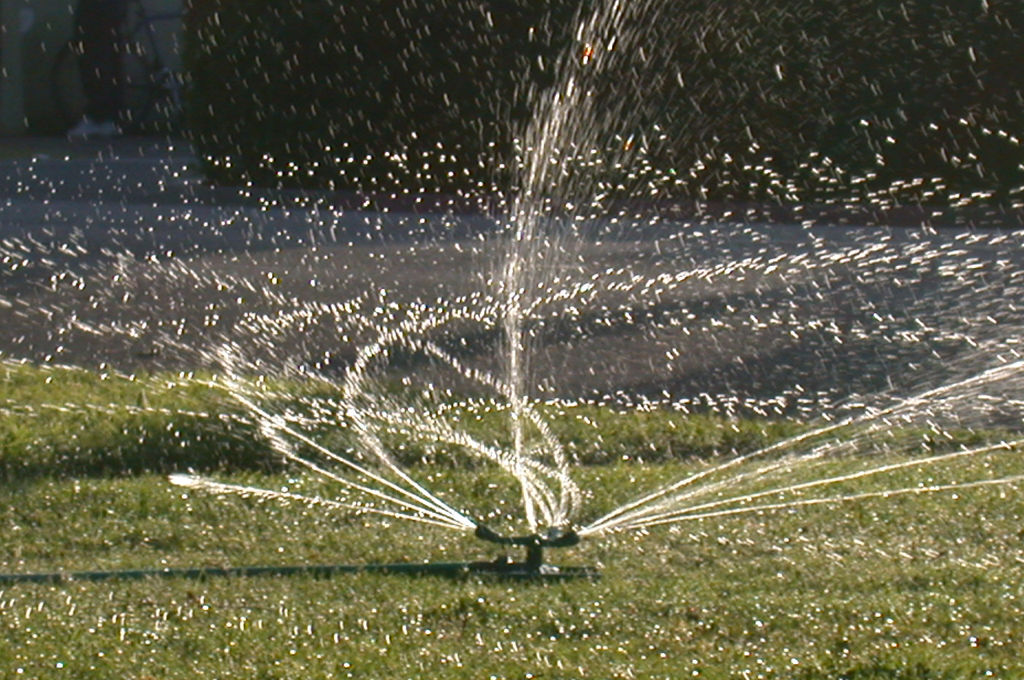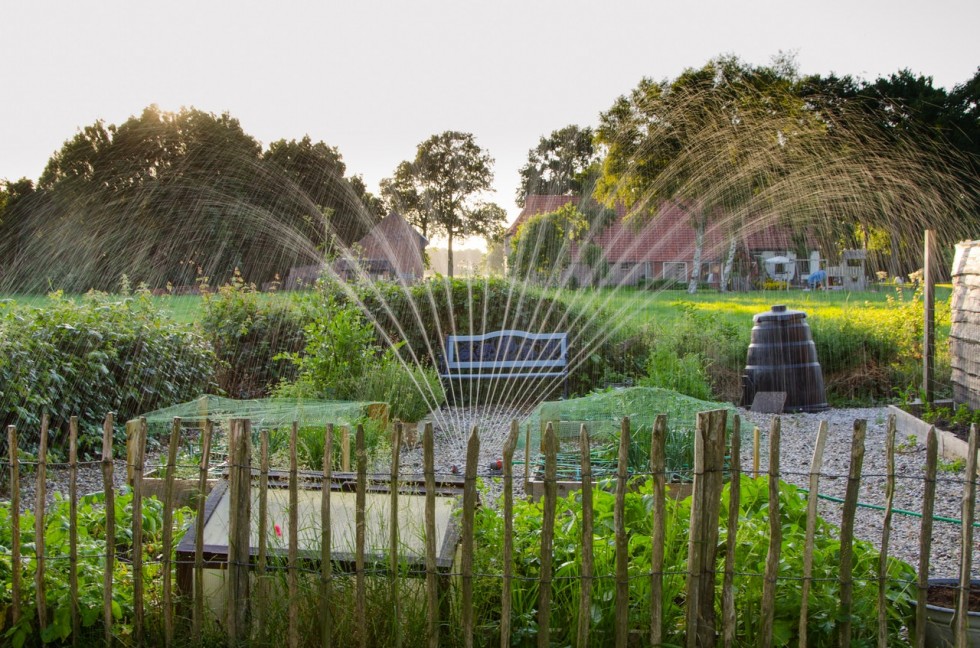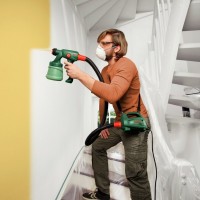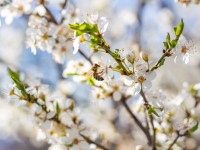Remember the numbers: a healthy lawn by 75-85% consists of water. To maintain the right proportion during hot weather, you might need to provide 1.5-2 inches of water a week. The lack of water will lead to the loss of green as well as lack of vigor, lower turf density, and eventually root death. Apart from that, you may also face turf diseases that are especially common in summer weather. There is a great number of problems related to the garden one may face in hot weather. So let’s take a closer look at the watering rules and means of maintaining the lawn in a great shape.
When to water the backyard?
You might have noticed that your neighbors water their lawns early in the morning. There are a couple of reasons for that:
- The lawn has enough time to absorb the moisture. This promotes root growth.
- Early morning is already a broad daylight, so the doomed environment won’t promote fungus development. To avoid disease problems, it is best to water your lawn at an early hour.
- Early morning is a continuation of the natural wetness from the dew.
- By watering in the morning, you taper off the drying time for the lawn as the ardent summer sun can literally burn wet leaves and grass in your backyard.
So when is “the morning”? The perfect morning time for lawn watering and backyard care is 4-8 A.M.
Note that early morning and late evening are not the same things. Professional gardeners warn not to water your backyard after 4 PM as this is the most propitious time for a fungus to develop. Remember also that the grass should get dry before the dark settles in.
How long to water the backyard at a time?
The length of watering for backyard care purposes heavily depends on your watering tactics and habits. However, the rule of thumb is that the watering session should be long enough to soak the backyard sufficiently and provide all the roots with the sufficient moisture. If you’re watering with automatic sprinklers, then you can set them for 30-35 minutes twice a week. For extremely hot summer periods, repeat the watering at least three times a week.
Hose vs sprinkler for backyard care
There is no drastic difference between the manual hose and automatic sprinkler watering except for the convenience. It is generally difficult to physically stand and water your backyard for 30-35 minutes with a hose. Moreover, most homeowners don’t have the luxury of half an hour of free time in the morning. For this reason, sprinkler systems are more popular in the US. Some gardeners also indicate that sprinklers allow more even water distribution than manual hose backyard care.
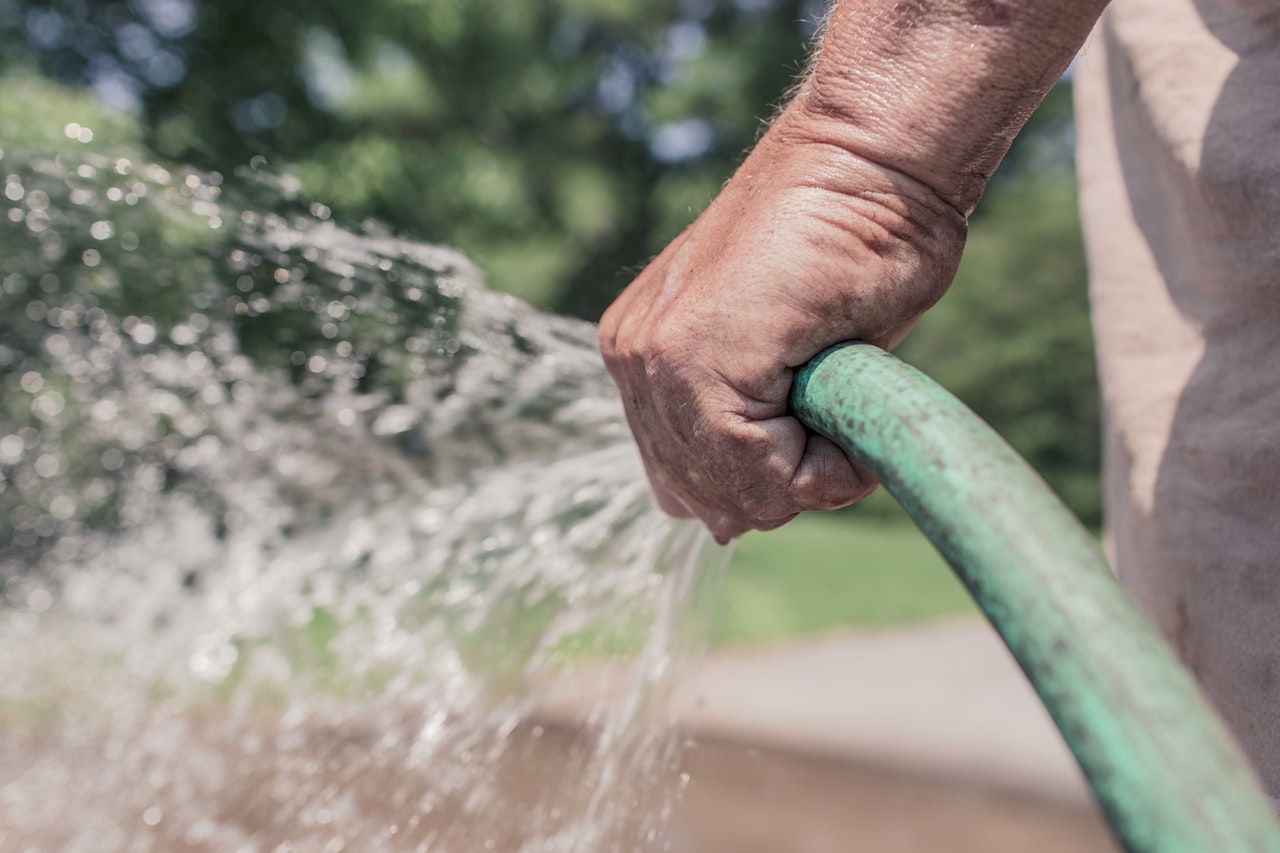
Sprinkler systems types and basic characteristics
Professional gardeners differentiate sprinkler systems from immobile to roaming which can cover the full property yard. The type you choose should depend on the yard and lawn size as well as the landscape of your property. Climate should also be taken into account.
Stationary sprinklers
Stationary sprinklers can vary excessively in design and reach. They are called stationary because the actual sprinklers are connected to a water supplying hose and spray water in a particular pattern over the same area until moved. Generally, the reach of stationary sprinklers is 5-15 feet at a time. These systems are advised for small yards and gardens with plants that need a similar water supply. The cost for stationary sprinklers begins at $18.
Pros: Due to their construction simplicity, they are really hard to break. Stationary sprinklers are good for small areas, and their efficiency is not influenced by the water pressure.
Cons: This sprinklers have only one way of watering and cannot cover large areas. If left in one place, they will cause puddling.

Oscillating sprinklers
Oscillating sprinklers are similar to stationary sprinklers but they have a different water dispersion pattern. They have a head with a row of multiple openings that moves from one side to the other creating a semicircular water dispersing pattern to provide the perfect backyard care. These sprinklers require manual moving of the unit from point to point in order to cover the whole area of the yard or garden. The average cost of oscillating sprinklers is $10-$30 where the cost influences the fine-tuning possibilities of a unit.
Pros: Can cover areas up to 4,000 square feet and works perfectly on rectangular areas. The efficiency doesn’t depend on the water pressure.
Cons: Application of oscillating sprinklers for curved, rounded, and other irregular areas is a waste of water. Cheaper models can linger at each end of the spray pattern and you will have puddles in the yard.
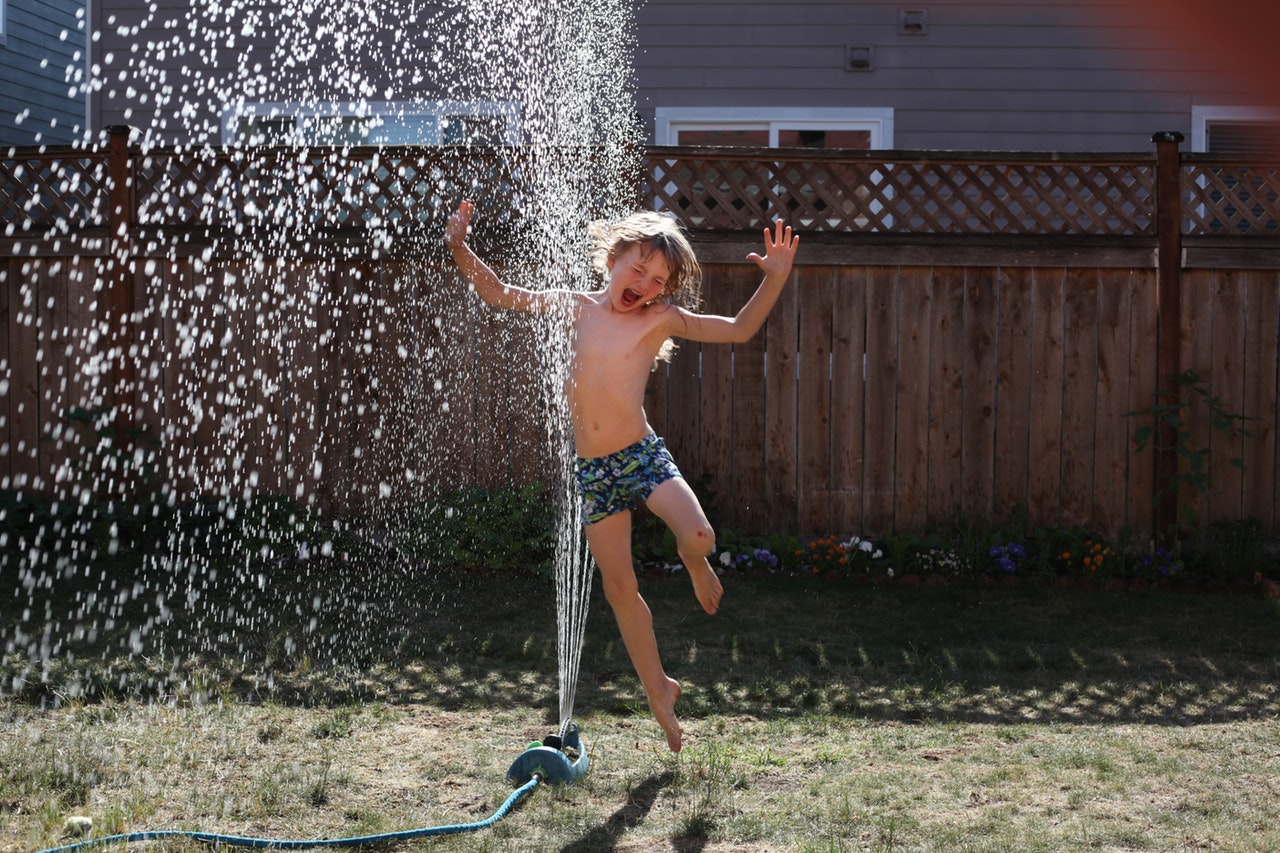
Rotating sprinklers
Rotating sprinklers spin 360 degrees when releasing water. As a rule, they have two or more spinning arms. There is a variation of rotating sprinklers which is called impact sprinkles. They also disperse water in the 360 degrees manner, but they spew water from only one jet, which clicks as it turns to guarantee full rotation for perfect backyard care. The cost for rotating sprinklers begin at $7-$8, however, it’s highly advised to look for more reliable and expensive units at rates of $25-$35.
Pros: These sprinklers can water a very large area (up to 10,000 square feet with high water pressure). Perfect option for irregular-shaped spaces. The watering is slow and gentle, rarely causes puddles.
Cons: The rotation creates noise. These sprinklers are inefficient under low pressure. Not the best type for rectangular areas.
